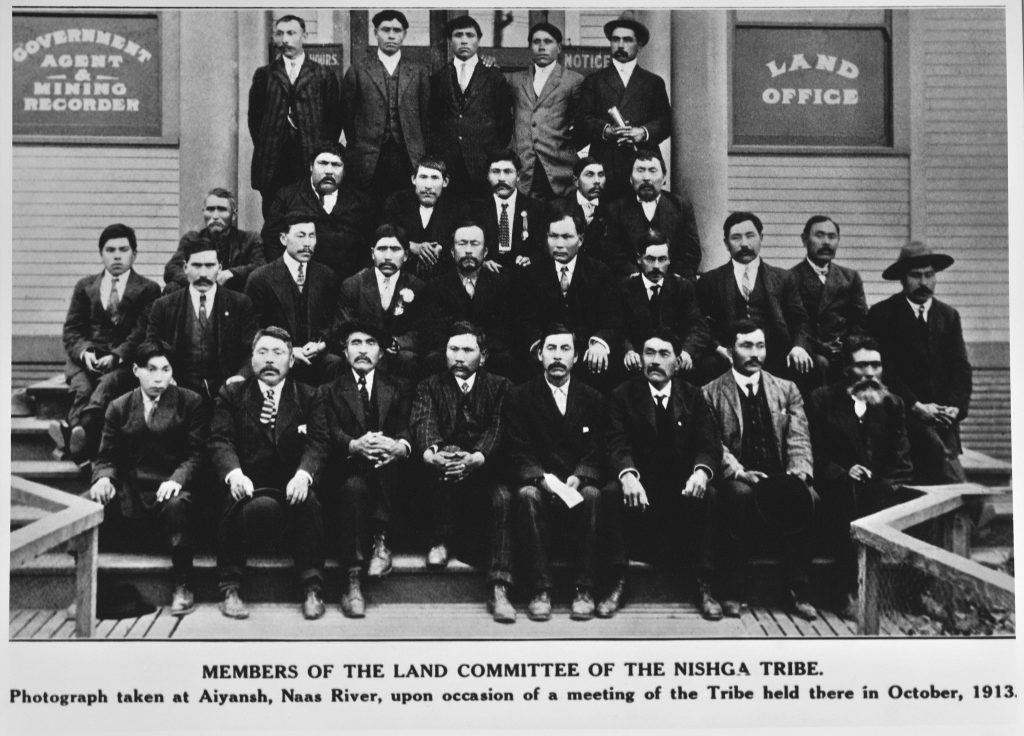The Land Question
Home Government History The Land Question
Government

Nisg̱a’a Lands in Northwest British Columbia are dominated by towering mountains, glacier-fed lakes, ancient forests, and rugged lava beds. These lands have sustained the Nisg̱a’a people for millennia.
Resources from Ḵ’alii-Aksim-Lisims and its plentiful watershed allowed the Nisg̱a’a to development of the most sophisticated precolonial cultures in North America. In the late 1800s, when much of Nisg̱a’a traditional territory was declared Crown Land, the Nisg̱a’a people began petitioning government to recognize their connection to this territory. In 1973, the Supreme Court of Canada delivered its decision in the Calder case, which was brought to trial by Nisg̱a’a Chief Frank Calder, president of the Nisg̱a’a Tribal Council. Formal negotiations began between the Nisg̱a’a Tribal Council and Canada in 1976. In 1990, the government of British Columbia joined the negotiations to establish a tripartite process. On August 4, 1998, an initialling ceremony celebration was held at Gitlaxt’aamiks.
After ratification of the Nisg̱a’a Treaty by the Nisg̱a’a Nation, British Columbia, and Canada, the Indian Act ceased to apply to the Nisg̱a’a people (except for the purpose of Indian registration). On May 11, 2000, the Effective Date of the Nisg̱a’a Treaty was a historic and triumphant day for the Nisg̱a’a people. It marked the end of a 113-year journey—and the first steps in a new direction.
Join us in the work
Some of us are awake and up and doing; others seem to be asleep,
lying down and doing nothing. By and by when the happy day comes, and we who have laboured are rejoicing in the fruits of victory, those sleepers will wake up and claim to have a share in the harvest. If those people want to share in the good things coming,
let them join with us in the work.
Timothy Derrick
Sim’oogit K’eexkw
August, 1919
